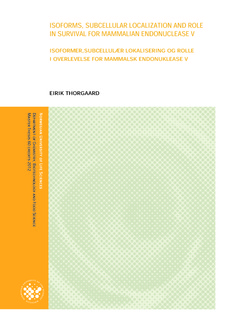| dc.description.abstract | Our hereditary material, the DNA, is on a daily basis subjected to endogenous and exogenous agents that lead to DNA damage. Therefore it is essential for the genomic integrity that these damages are repaired efficiently. As a response to DNA damage, cells have developed various repair mechanisms and defects in these are associated with cancer, ageing, and various neurodegenerative diseases. Therefore it is important to understand how the DNA is repaired and how the genetic information is preserved. A broader understanding of the DNA repair enzymes and how they function is an important matter. Endonuclease V (EndoV) is a highly conserved DNA repair enzyme found in most organisms from prokaryotes to human. Prokaryotic EndoV has affinity for deaminated bases in DNA. Escherichia coli EndoV recognizes and binds to deaminated adenine (hypoxanthine), and cleaves the DNA stand at the second phosphodiester bond 3’ of the lesion. The high degree of conservation in the EndoV family suggests an important function also in the eukaryotic cell. The aim of this thesis has been to characterize the endonuclease V homologs from Homo sapiens and Mus musculus. The results from this study show that there are a high (and uncertain) number of isoforms of human ENDOV, which makes it difficult to characterize and determine the function of this protein. The full-length hENDOV transcript (exon 3-contaning) does not represent the majority of the transcript variants in human cells, which is unexpected since exon 3 is known to make up the core of the protein. In line with this, endogenous full-length hENDOV protein could not be detected, neither in Western analysis or by immunoprecipitation. Intracellular localisation of hENDOV fused to EGFP showed that isoform 1 was located to the cytoplasm and nucleus with enrichment in nucleoli in transfected HeLa-S3 cells, whereas the other two isoforms showed only localization in the cytoplasm. Cells expressing hENDOV isoform 1 was exposed to DNA damaging agents, and interestingly, after CPT exposure hENDOV was excluded from the nucleoli. The role of hENDOV in the nucleoli remains unclear. The viability assay (MTT-assay) on primary mouse embryonic fibroblast (MEF) cell lines with or without mEndoV revealed no difference in survival after treatment with DNA damaging agents. In summary, this thesis presents the first the characterization of the human ENDOV protein. Despite high conservation in all domains of life and current results, the function of mammalian EndoV is still unclear and further studies are needed. | no_NO |
